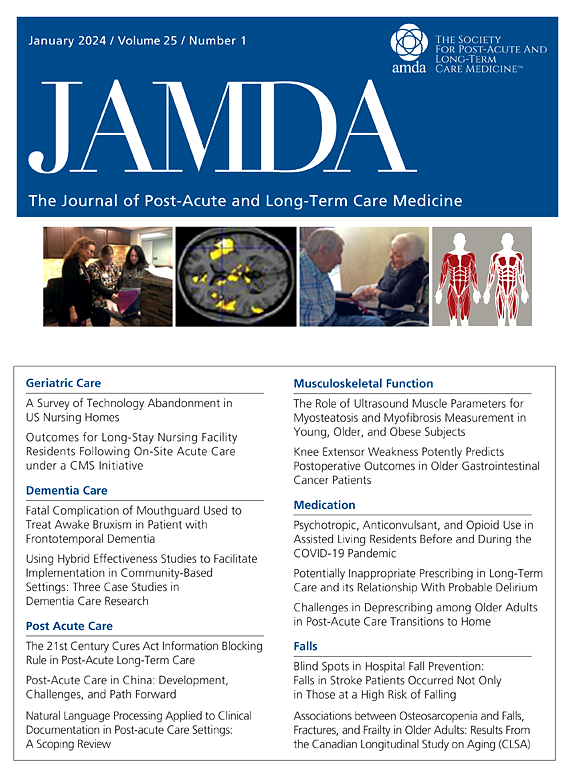评估与住房和城市发展部232资助的养老院贷款参与相关的设施、居民和财务特征。
IF 4.2
2区 医学
Q2 GERIATRICS & GERONTOLOGY
Journal of the American Medical Directors Association
Pub Date : 2025-05-24
DOI:10.1016/j.jamda.2025.105630
引用次数: 0
摘要
目标:许多养老院需要显著的现代化,以提高居民的生活质量,但获得资金仍然是一个关键障碍,特别是对那些依赖医疗补助资金。住房和城市发展部(HUD) 232资助的贷款项目有助于确保养老院获得低息融资,但其对资本可及性和质量改善的影响尚不清楚。本研究考察了与接受HUD 232资助贷款相关的养老院特征。设计:线性概率模型来评估设施、居民、金融和县级特征,预测HUD 232贷款的可能性。环境和参与者:我们分析了2012年至2021年的养老院,以及2013年至2020年的HUD 232队列,使用综合数据集,包括HUD 232赞助的贷款数据,CMS养老院比较,LTCFocus和医疗保险成本报告。方法:我们使用线性概率模型来评估设施特征与获得HUD 232资助贷款的可能性之间的关系,重点关注诸如所有权类型,财务稳定性,人员配备水平和居民人口统计等因素。结果:经营利润率较高、医疗保险居民比例较高以及农村地区的养老院更有可能获得HUD 232资助的贷款(P < 0.01)。相比之下,非营利组织在贷款接受者中代表性不足(P < 0.01)。质量指标(如总体星级评定和健康缺陷)与贷款吸收之间没有显著关联。结论和启示:研究结果表明,尽管住房和城市发展部232资助的贷款计划改善了财务稳定的养老院获得资金的机会,但它可能会排除其他需要资金的养老院,如非营利机构和服务较少医疗保险居民的养老院。政策制定者应考虑改革,以更好地使该计划与支持整个养老院部门现代化的目标保持一致,特别是对那些经济上处于不利地位的机构。本文章由计算机程序翻译,如有差异,请以英文原文为准。
Assessing Facility, Resident, and Financial Characteristics Associated with HUD 232–Sponsored Loan Participation in Nursing Homes
Objectives
Many nursing homes require significant modernization to enhance resident quality of life, yet access to capital remains a critical barrier, especially for those dependent on Medicaid funding. The Housing and Urban Development (HUD) 232–sponsored loan program helps insure low-interest financing to nursing homes, but its impact on capital accessibility and quality improvement remains unclear. This study examines nursing home characteristics associated with receiving HUD 232–sponsored loans.
Design
Linear probability model to assess facility, resident, financial, and county-level characteristics predicting HUD 232 loan likelihood.
Setting and Participants
We analyzed nursing homes from 2012 to 2021, with the HUD 232 cohort spanning 2013 to 2020, using a comprehensive data set combining HUD 232–sponsored loan data, CMS Nursing Home Compare, LTCFocus, and Medicare Cost Reports.
Methods
We used a linear probability model to evaluate the relationship between facility characteristics and the likelihood of receiving a HUD 232–sponsored loan, focusing on factors such as ownership type, financial stability, staffing levels, and resident demographics.
Results
Nursing homes with higher operating margins, higher proportions of Medicare residents, and in rural locations were significantly more likely to receive HUD 232–sponsored loans (P < .01). In contrast, not-for-profits were underrepresented among loan recipients (P < .01). There was no significant association between quality measures, such as overall star ratings and health deficiencies, and loan uptake.
Conclusions and Implications
The findings suggest that although the HUD 232–sponsored loan program improves access to capital for financially stable nursing homes, it may exclude others in need of funding, such as not-for-profits and nursing homes serving fewer Medicare residents. Policy makers should consider reforms to better align the program with its goal of supporting modernization across the entire nursing home sector, particularly for those facilities that are financially disadvantaged.
求助全文
通过发布文献求助,成功后即可免费获取论文全文。
去求助
来源期刊
CiteScore
11.10
自引率
6.60%
发文量
472
审稿时长
44 days
期刊介绍:
JAMDA, the official journal of AMDA - The Society for Post-Acute and Long-Term Care Medicine, is a leading peer-reviewed publication that offers practical information and research geared towards healthcare professionals in the post-acute and long-term care fields. It is also a valuable resource for policy-makers, organizational leaders, educators, and advocates.
The journal provides essential information for various healthcare professionals such as medical directors, attending physicians, nurses, consultant pharmacists, geriatric psychiatrists, nurse practitioners, physician assistants, physical and occupational therapists, social workers, and others involved in providing, overseeing, and promoting quality

 求助内容:
求助内容: 应助结果提醒方式:
应助结果提醒方式:


